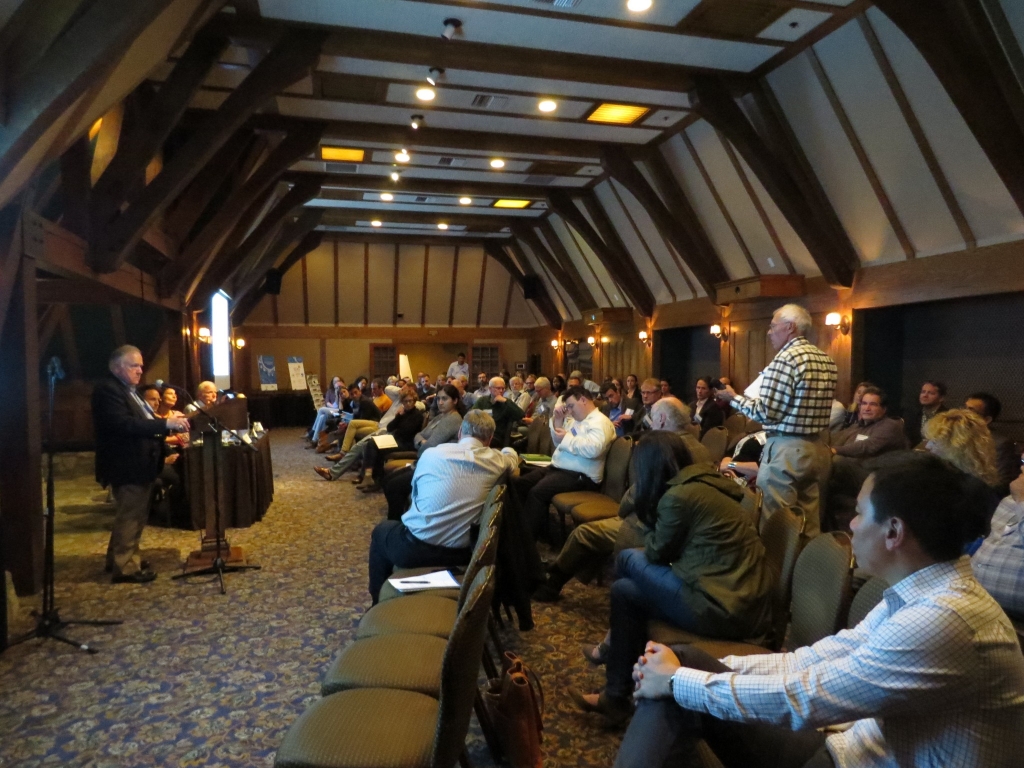California’s High-Speed Rail system isn’t just the biggest transportation project happening in the state right now, it’s the biggest public-works project ever in the history of California. Monday night’s panel, moderated by UCLA Prof. Emeritus Martin Wachs, convened experts to discuss what Californians can expect from this huge undertaking in the years ahead. Wachs began the panel by stressing just how much of a work in progress High Speed Rail is. The overall estimated price tag is $64 billion, and $40 billion of that amount is still uncommitted. In order to save money, the system is being built from the middle out, meaning it won’t serve either of the state’s two main cities for some time. Above all, Wachs noted, “the rules about expending the funds that we have are forcing, in the short run, decisions which are very complex and which are shaping the project in the long run.”
As an example of this, Wachs pointed to the legislative mandate that travel time between Los Angeles and San Francisco be less than 2 hours 40 minutes. Achieving this goal would require an exclusive, high-quality right of way, which will seriously increase the cost of the project. Moreover, private-sector companies have so far been unwilling to accept the high risk level associated with this project. Lou Thompson, a transportation consultant, elaborated on the role of the private sector. He pointed out that high-speed rail funding is currently coming from a variety of public sources, including money from the 2009 federal stimulus package and Cap and Trade revenue. Eventually these funds will run out — and whether private investors will fill the gap largely depends on if the High-Speed Rail Authority can make credible forecasts about ridership and costs.
Deike Peters of Soka University and Eric Eidlin of the Federal Transit Administration focused their presentations on the design and land-use aspects of High Speed Rail. Peters pointed out that transit, in and of itself, rarely has an effect on development patterns. Instead, what’s important is good urban design, and integrating transit infrastructure with the surrounding neighborhoods. She said that California’s High-Speed Rail alignment would need to be considered as both a route and a place in order to change how Californians travel for the better. Moreover, she said, good station design could not make up for a lack of good urban planning surrounding the station itself — something many European cities have found out the hard way.
Eidlin also cited examples from Europe, including the popular Paris-Lyon route, as proof that locating major transit facilities in central cities can help maximize economic development and mobility. Like Peters, though, he stressed the need to view the infrastructure contextually. A major high-speed rail hub that doesn’t have strong physical and modal connections to local transit, he said, is likely to fail at changing travel habits.
During the question-and-answer session, when Wachs asked the panelists a question about the fiscal future of the project, Thompson opined that even with all the money at stake here, it was important to look at High-Speed Rail outside the framework of a pure “fiscal” project. “They are not financially viable in Europe and they won’t be here,” he said. In evaluating whether High-Speed Rail is worth the risk, Californians would need to weigh all the benefits and costs — financial, cultural, and environmental — and decide whether this new train system is the right choice for the state’s future.
